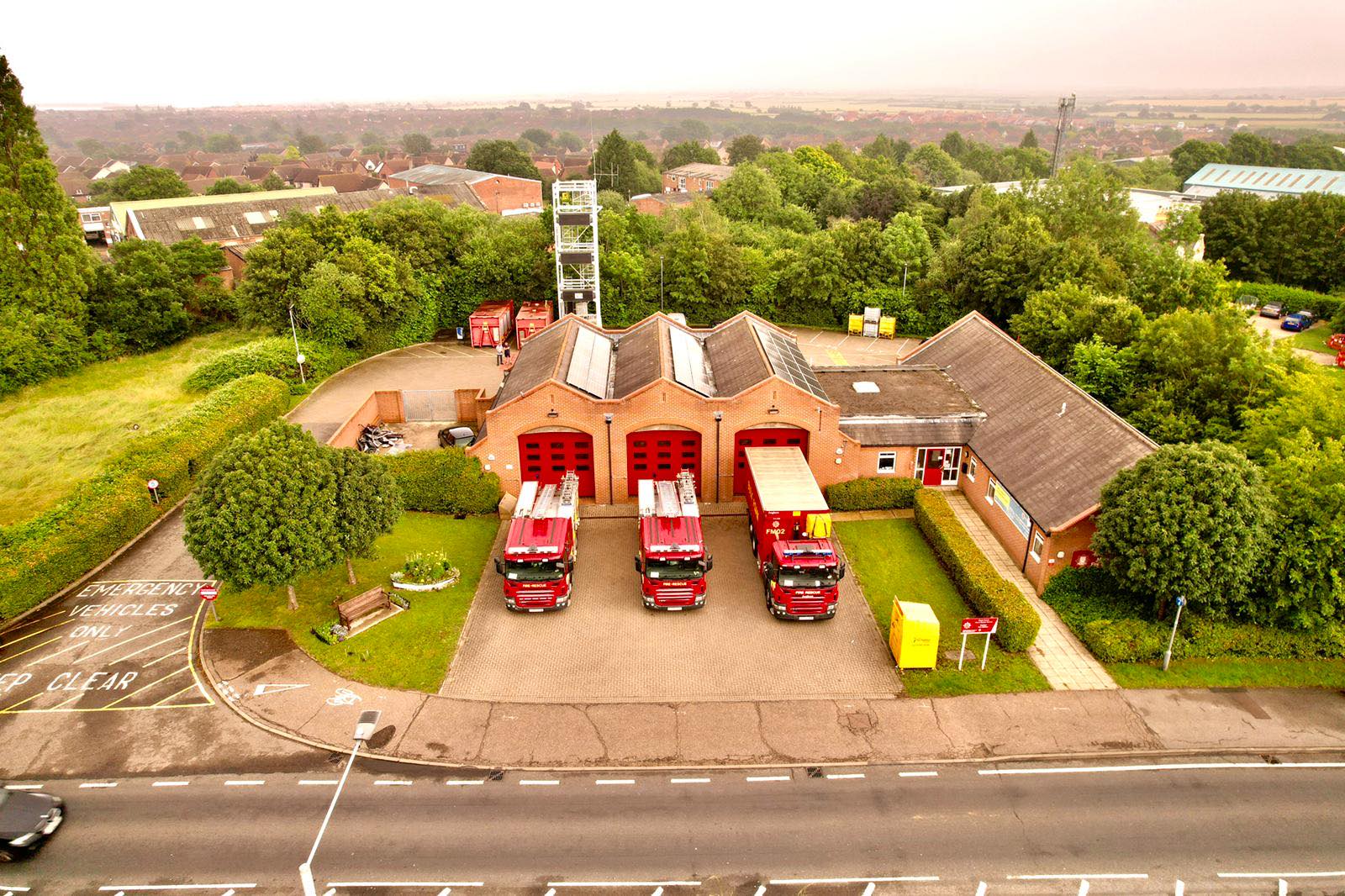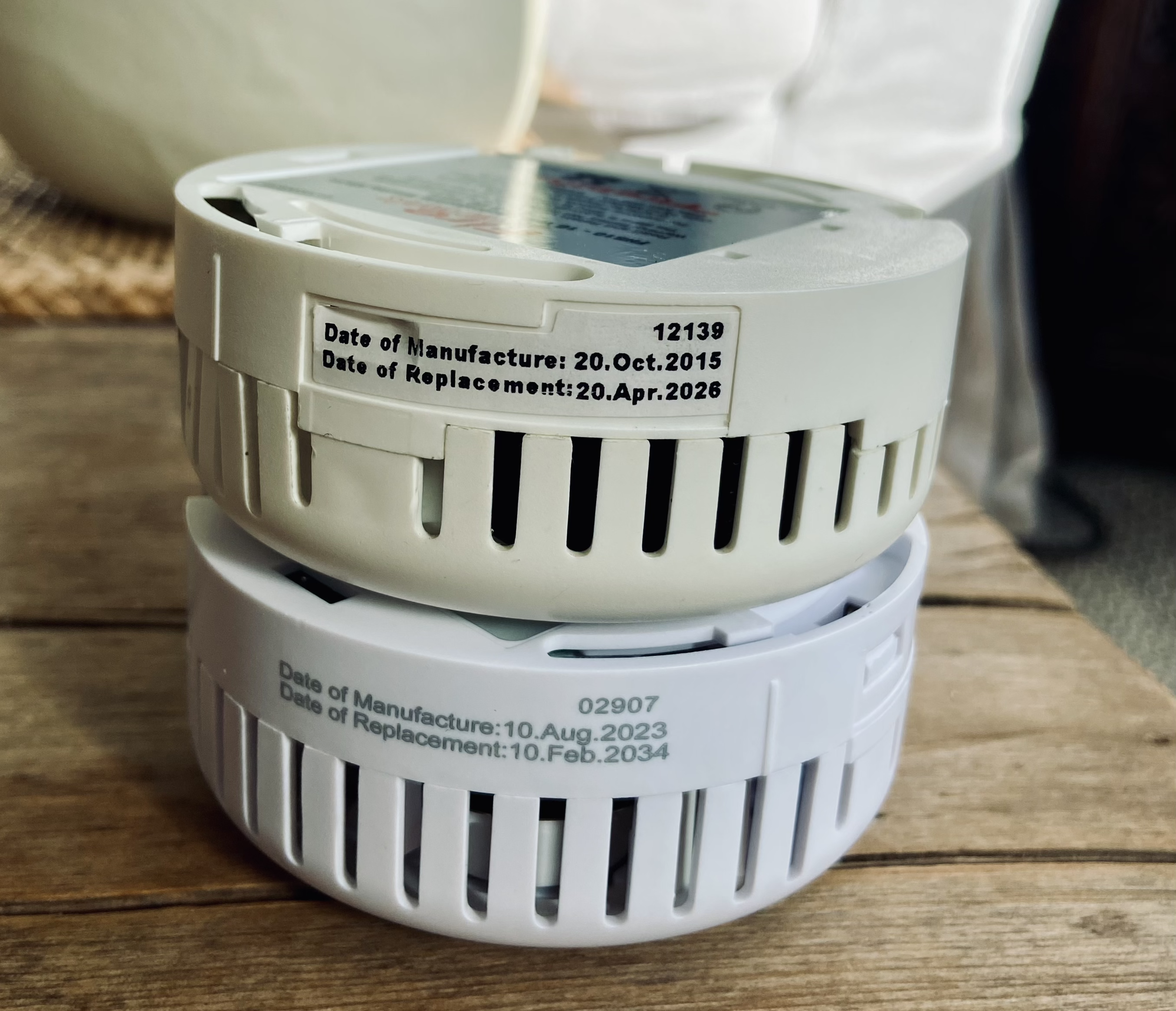Benfleet boys have a night on the town
It was actually the second time that Benfleet had gone ‘up town’ (in to London) for the evening. The previous occasion had been almost exactly six months earlier and had finished up with them spending the night there. There was every indication that this could be an all-night session too.
As with that earlier trip, leading fireman ‘Nobby’ Clark was going to lead the party, which rendezvoused at Benfleet Volunteer Fire Brigade’s (BVFB) Hadleigh fire station at 2100 hours on 10 May 1941. All those going on this nocturnal expedition were members of the Auxiliary Fire Service (AFS) attached to Benfleet Volunteer Fire Brigade. They were responding to an order to BVFB to send 6 pumps to London’s Whitechapel fire station.
“Nobby” was riding in the lead appliance, an AFS Heavy Unit (HU). This was a lorry chassis carrying a high capacity pump (usually at least 1,000gpm) with its own engine. It was fitted with lockers for hose, carried ladders and had a rear facing shelter for its crew behind the cab. It was painted grey and carried a crew of up to seven. There were seven on board for the Hadleigh to Whitechapel run.
We don’t know what the other vehicles in this convoy were. Another HU might have been there, but most likely the other five appliances would have been AFS trailer pumps towed by large saloon cars or small commercials, all impressed for fire service use. Nobby was in charge on the basis of previous experience, it is likely that he had been to London more often that just that visit six months previously, and because of his knowledge of the route and various back roads and short-cuts. These had proved invaluable before and would do so again on this trip.
Nobby Clark summarised the initial stages of the journey: ‘There were fires burning in Purfleet and Grays and Dagenham was wreathed in smoke. In Romford there were fires on both sides of the road, but these were being dealt with by local firefighters. Things were quieter in Ilford until a policeman stopped the convoy, explaining that they could not proceed as there was an unexploded bomb on the main road.’ Here Nobby’s local knowledge came to the fore and he was able to navigate his party around this obstacle and they continued towards London.
The instructions had been quite clear – all six pumps were to report to Whitechapel fire station. However, four miles short of this objective, in West Ham, the fire situation was so dire that Nobby decided to divert to West Ham Fire Brigade’s headquarters fire station at Stratford and seek further orders. There were no firefighters or appliances at the station. However, a West Ham FB officer arrived shortly afterwards and immediately commandeered three of Nobby’s machines for local fires. He ordered Nobby to continue with the remainder of the convoy to Whitechapel with the proviso that one pump should be detached at Bow Bridge to help at a fire there involving a flour mill which was out of control. However, when the remaining crew arrived at Bow, the officer in charge of operations at Bow Bridge took two of Nobby’s pumps.
Nobby’s HU eventually made it to Whitechapel. The 30 miles from Hadleigh had taken around three hours and, as at Stratford, there were no firefighters or appliances at the fire station. However he was soon ordered to proceed to the Mansion House, via Aldgate and Fenchurch Street, where there was a very serious fire situation. He noted a constant warm wind and the concussion of falling bombs.
At the Mansion House the Hadleigh HU was ordered by a London Fire Brigade (LFB) officer to start pumping from a 5,000 gallon static tank, which was, in turn, being supplied via a line of hose from King William Street. Soon the Hadleigh crew had three jets at work on buildings on Queen Victoria Street – two on buildings on fire on one side of the street, the other cooling a building opposite which was in danger of catching fire by radiated heat. Overall the heat was so intense that the jets were turning to steam.
It soon became apparent that water supplies would not hold out. The static tank was half full and a 25” water main was completely dry. Nozzle sizes were reduced in an effort to save water, but the two jets on the burning building had to be shut off, although the third, cooling jet, was kept going. The principle burning structure on Queen Victoria Street belonged to the Salvation Army, and at this point its entire front collapsed, most spectacularly, into the roadway.
The falling building was recorded for posterity by a photographer in one of those ‘once-in-a-lifetime’ shots and became one of the iconic photographs of the London Blitz It fell between the cameraman and an extended fire service turntable ladder (TL), and when the dust had settled the TL was still standing.
The first concern after the building’s fall was the evacuation of shocked and injured firefighters. Thereafter Nobby deployed his crew in attempts to recover hose, but most of it was buried under red hot rubble and had been destroyed. The heat in the area was extremely intense, but firemen managed to get a trailer pump working. Nobby remembered that he suddenly felt dazed and giddy and was violently sick. Then he was told that firefighters were evacuating the Queen Victoria Street area and he should report with his HU and crew to Clerkenwell fire station.
En route, in Threadneedle Street (where the Bank of England is situated), Nobby stopped the vehicle when he saw firemen, some injured, leaving Bank Underground station. They had been firefighting when their water supply had failed and they had been cut-off by flames and forced to flee through Underground tunnels. All were loaded onto the HU and taken to a fire control point in Finsbury Square where first-aid was available.
The Benfleet HU resumed its journey to Clerkenwell, but in the Faringdon Road it was flagged down by an LFB officer and subsequently the crew spent several hours dealing with a warehouse which was burning from top to bottom. The appliance pumped from a dam which was kept well supplied with water. They stayed there until relieved by firemen from an outer London station and were then told to report to an AFS station in a school in Clerkenwell for a meal.
At the school Nobby was called along with other officers in charge of crews to a conference with an LFB officer. He was asked where his crew had come from and where they had worked. It was 1530 hours on 11 May, eighteen and a half hours since they had left Hadleigh fire station and “Nobby” was told that he and his crew could finally stand down and return home. On the way back they stopped in Romford for a cup of tea and watched convoys of fire appliances moving towards London. They finally reached Hadleigh fire station at 1800 hours. Ten hours later, after a wash and a sleep, they were back in convoy again – on their way back to London.
What Nobby and his colleagues didn’t know then was that they had fought the fires of almost certainly the worst major air raid on London. The capital and other British cities would be bombed again, but on nothing like the same scale as that May night. The extent of the raid and its fires were major triggers in the nationalisation of the British fire service some three months later to create the National Fire Service.
The events covered in this article were touched on, briefly, in the All Fired Up article, “Alf Norman, Unsung Hero” by Mick Ford. This article is based on an account given by ‘Nobby’ Clark in the 1980s to the fire service historian and author, Neil Wallington, who served in the fire service from fireman to chief fire officer, for his book “Firemen at War”. It paints a very vivid picture of “Blitz” firefighting and has a very Essex context. It is worth remembering that Nobby Clark, the man at the centre of this story, was only an AFS leading fireman who sallied forth from east Essex with a group, perhaps totalling around 40, of colleagues to deal with fires on a scale not even the most experienced of regular firemen could have envisaged. Leading Firemen were one rank above a fireman and the AFS was a national organisation, largely part-time, formed to assist regular fire brigades in time of war and given somewhat basic training and equipment.
By Mike Smith
All Fired Up’ is a series of articles written by our Museum volunteers about the history of the fire service in Essex.
Volunteers spend many hours researching the collection, often uncovering untold stories and finding interesting facts that would otherwise be lost.
To share these invaluable snippets of history with you we are making some of this research available. Read the full list here.


